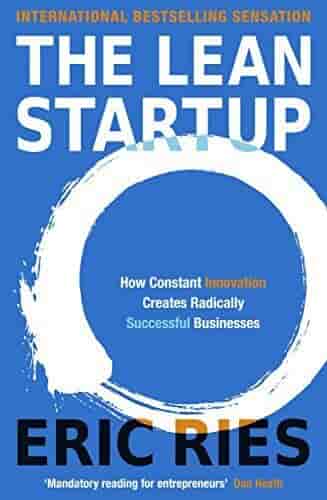Risk-Free Success: The Cycle of the Lean Startup Methodology
The Lean Startup Methodology has experienced a surge in popularity in recent years, emerging as one of the leading frameworks for launching a successful business. Its appeal lies in its ability to minimise the risks faced by entrepreneurs.
This aspect is crucial given the harsh reality that 90% of online startups fail to surpass their first year (National Business and Capital Services). Unfortunately, entrepreneurs often lack the same level of resources available to large corporations, where the failure of a new venture or prototype is a mere blip that can be absorbed by other areas of the company.
However, for entrepreneurs or small and medium-sized businesses (SMBs), going all-in on a failed idea often means the demise of the entire company. Such is the nature of startup life. Or is it? In this post, we’re going to introduce the Lean Startup Methodology, the process that boasts much higher than average startup success rates.
What Is The Lean Startup Methodology?

The Lean Startup methodology, originally introduced by Eric Ries in his book of the same name, draws inspiration from Toyota’s renowned lean manufacturing model, which focuses on minimising waste and optimising resource allocation. Ries recognised that the majority of startup failures stem from investing excessive time, energy, and finances into ideas that ultimately prove ineffective.
Entrepreneurs often dedicate countless hours crafting detailed business plans, assembling teams, pitching to investors, and attempting to sell their products or services. However, as the saying goes, “no good plan survives the first contact with the customer.” This realisation highlights the pitfalls of spending 2-3 years on an elaborate business plan when the customers’ response may render it obsolete. Entrepreneurs are left pondering what to do if customers show no genuine interest in the final product. Must they return to square one and start from scratch? What about the considerable investment of time, energy, and money already poured into the venture?
Ries swiftly grasped the fundamental disparity between startups and traditional businesses. While established models exist for opening, for instance, a craft beer establishment (as demonstrated by Brewdog COO David McDowell), startups typically introduce entirely novel and innovative products or services without any prior precedent.
Consequently, the detailed business plan painstakingly crafted over the years becomes rife with untested assumptions, with entrepreneurs hypothesising how the market will respond to their solution. To spare themselves from heartache, Ries suggests breaking down the plan into hypotheses and conducting experiments to verify their validity.
Through a process of validated learning, entrepreneurs can systematically test their assumptions using product prototypes and derive valuable, empirical data from customer feedback. If customers do not respond favourably, a pivot in a new direction becomes necessary. This approach ensures that a flawed initial idea does not prove fatal to the organisation, allowing for adaptation and alignment with the market’s demands.
Thousands of companies worldwide, ranging from government organisations and defence departments to marketing agencies and family-owned businesses, have successfully employed this methodology.
What’s The Purpose of The Lean Startup Methodology?
The aim of adopting the lean startup methodology is to eliminate wasteful practices in the early stages of a company, increasing the likelihood of long-term success. By embracing this approach, early-stage startups can achieve success without relying on excessive funding, exhaustive business plans, or flawless products.
To effectively implement the lean startup process, the startup must prioritise obtaining customer feedback on their initial product. This feedback serves as a valuable guide for making iterative improvements over time, aligning the product with customer preferences.
Additionally, customer feedback prevents wasteful allocation of resources towards services and features that do not resonate with the target market. The core principle of the lean startup methodology revolves around maximising efficiency by utilising the minimum necessary resources.
What Are The Main Characteristics of a Lean Startup?

Key features of a lean startup encompass the following:
- Market-Driven Product Development: A lean startup emphasises developing a product that aligns with the desires and needs of the market. By understanding customer preferences, it aims to create offerings that have a higher chance of success.
- Validated Learning: Validated learning is a fundamental aspect of the lean startup methodology. It involves actively seeking and analysing customer feedback to determine their level of interest and satisfaction. This data-driven approach helps make informed decisions and iterate on the product accordingly.
- Metrics-Oriented Approach: Metrics play a pivotal role in measuring progress and success. A lean startup focuses on key metrics such as product popularity and lifetime customer value to assess the viability and impact of the offering in the market.
- Minimum Viable Product (MVP): Rather than launching a fully developed product, a lean startup begins with a minimum viable product. This allows for an initial assessment of customer reactions and enables swift adjustments based on their feedback.
- Embracing Experimentation: In contrast to rigidly adhering to a predefined plan, a lean startup encourages a mindset of experimentation. By conducting small-scale experiments, entrepreneurs can gather insights, test assumptions, and adapt their strategies accordingly.
In summary, a lean startup prioritises market-driven product development, validated learning, metrics-driven decision-making, the use of minimum viable products, and an experimental approach to optimise chances of success.
Why Is The Lean Startup Methodology Important?
Understanding the lean startup methodology is crucial as it can serve as the foundation for your entire company. Whether you opt for the conventional startup approach or embrace the lean approach, comprehending the distinctions between these two methods will aid you in determining which approach best suits your new startup.
The 4 Steps of The Lean Startup Methodology
The lean startup methodology follows a cyclical process consisting of four distinct stages: Build, Measure, Learn. Let’s explore each stage in detail.
Firstly, entrepreneurs begin by mapping their ideas onto the business model canvas. This graphical representation of the nine key building blocks of a successful business ensures that entrepreneurs consider all potential areas for innovation. If you’re new to the business model canvas, we’d recommend reading our dedicated blog post about it here.
Secondly, entrepreneurs formulate hypotheses based on the insights gained from analysing the business model canvas. These hypotheses serve as assumptions to be tested.
Thirdly, entrepreneurs proceed to test these hypotheses in relation to their business ideas. The most effective approach is to create a minimum viable product (MVP). An MVP is a basic version of the product, containing essential features that can be utilised by early adopters. It is built using minimal time and resources, providing sufficient feedback to validate the idea. See our guide to developing a Minimum Viable Product here.
Lastly, after evaluating customer feedback, incorrect hypotheses are discarded, and new ideas are introduced and tested. This iterative cycle continues until a product-market fit is achieved. A product-market fit is established when a specific customer segment demonstrates a willingness to pay for the value offered by the product.
By embracing this iterative process of building, measuring, and learning, entrepreneurs can refine their ideas, adapt to customer needs, and ultimately increase their chances of achieving a successful product-market fit.
Build, Measure, Learn

The lean startup methodology revolves around the core principles of build, measure, and learn, which means:
Build
The lean startup methodology starts by developing a minimum viable product (MVP), which is a service or product with sufficient features to satisfy customers while testing the viability of the product in the market.
It’s important to note that the MVP should not be deployed to all customers but rather to a small subset of customers representing diverse demographics. This approach constitutes the “build” component of the lean startup methodology. Given that building is the initial step of this methodology, it is highly advisable to commence the creation of a basic product or service early on in the startup journey.
See more information about finding your minimum viable audience to create your MVP for here.
Measure
In the “measure” phase of the lean startup methodology, it is crucial to effectively assess the outcomes of your minimum viable product (MVP) while continuing to refine its development. The feedback provided by your customers becomes a valuable resource for enhancing the product and incorporating additional features. If you discover that the MVP fails to resonate with the customers it was intended for, you can discard the basic product without expending excessive resources.
The feedback received can be measured through various methods. For online businesses, surveys can be administered to customers, and website analytics can be analysed to identify strengths and areas for improvement. In the case of physical products undergoing testing before market launch, feedback can be readily obtained by directly questioning the testers about their experience with the product. Once data on the MVP is gathered, the subsequent step is to learn from this information, constituting the third component of the lean startup methodology.
Learn
Merely measuring the results and collecting feedback from initial customers is insufficient if the goal is to develop a market-ready product or service. To achieve this, it is crucial to learn from the data and feedback received, even though it may not always be an easy process. Certain feedback may not directly contribute to the creation of a successful product. However, such feedback can be valuable in identifying areas that are not functioning effectively and require refinement. By effectively learning from the results of product testing, it becomes possible to develop a product that adequately caters to the needs of the target audience.
Traditional Startups Vs Lean Methodology Startups
The principles of the lean startup methodology challenge the long-standing norms of the traditional startup approach. In the traditional approach, startups are expected to create a comprehensive 2-5 year business plan that outlines their goals and strategies for achieving success. This plan is then used to secure funding necessary for pursuing these business objectives.
Another significant contrast between the traditional approach and the lean approach lies in the focus on stealthily developing products, keeping them unknown to anyone except the company’s employees and investors. While this strategy may work for well-established companies, it may not be as effective for early-stage startups.
In contrast, entrepreneurs adopting the lean methodology typically begin by searching for the right business model and subsequently testing their ideas. Feedback from customers becomes crucial in iterating and enhancing the product or service. The lean methodology and the traditional methodology have few similarities, as they operate on distinct core principles.
Both approaches have the potential for success, but their underlying principles differ significantly.
Overview
In conclusion, the Lean Startup Methodology offers a proven path to risk-free success. By embracing the iterative cycle of build, measure, and learn, entrepreneurs can mitigate risks, adapt quickly, and deliver value to customers. This continuous improvement loop fuels innovation, drives growth, and paves the way for long-term success in today’s dynamic business landscape. Embrace the Lean Startup approach and embark on a journey of entrepreneurial excellence.
Learn more about creating a Minimum Viable Product for your company as well as other ways of validating your startup idea.







